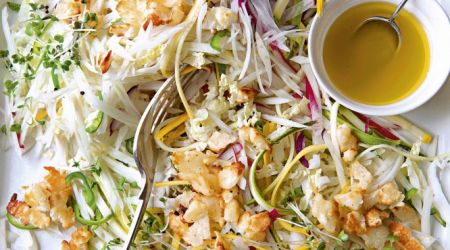Radishes
Pink, purple, red – whatever their outer shade, these small root vegetables are cruncy and punchy on the inside, and fresher than spring itself, says Clarissa Hyman.
Are you sitting comfortably? Then, I’ll begin. Once upon a time there was a little Chinese boy who planted a radish seed. It grew and grew until it was the size of a ping-pong ball, then a rice bowl and finally as big as the little boy himself. He tugged and tugged at the leaves but couldn’t pull it up: one by one he asked his mother, father, grandparents, sisters and brothers, the dog, cat and mice to help, until at last they all pulled together and the enormous radish burst out of the ground.
This popular fable is meant to teach the virtues of mutual help in accomplishing a task – although the first time I heard it, I dreamt of being squashed flat by a terrifying, giant, rampaging radish. Well, I was only six. But the thought that radishes are not necessarily all they seem has stayed with me. Maybe it’s because their beautiful, flushed fuchsia shading and creamy white never really prepare you for their peppery bite. They are, perhaps, the first introduction many children have to gardening, since they are easy to cultivate from seed and mature quickly, sometimes in less than a month. Successive sowings will provide a constant supply throughout the summer, although they must be lifted young. Gardener-cook Sarah Raven says you don’t even need a garden to grow them: simply sow them in plastic guttering and place on a window ledge or doorstep.
The radish, a member of the Brassica family, was probably first cultivated by the ancient Egyptians, over 5,000 years ago. Food historian Alan Davidson notes there are a number of pictures and written references to radishes in archeological findings; an account by the ancient Greek historian Herodotus suggests the slaves who built the pyramids were given rations of radishes, onions and leeks. Mention of cultivation in China dates back a mere 2,000 years by comparison, and by the 16th century, radishes were commonplace throughout the New World, having been taken to the Americas by the Spanish and Portuguese.
Radishes – Raphanus sativus – vary greatly in colour and size: they are related to turnips and to horseradish, hence their peppery taste. In the UK, we are most familiar with ‘table’ radishes, which have small, reddish-pinky-purple roots and crisp white flesh, and are at their best from April to June. Hot, dry weather generally makes for a spicier radish. In contrast, hydroponically grown, year-round radishes mostly taste bland and watery.
For flavour and texture, Sarah Raven recommends that home gardeners seek out the round Cherry Belle, which look like fruit gobstoppers, although the more widely available French Breakfast have an interesting oblong shape. A winter varietal that stores well is Black Spanish Round (though it is rarely seen in Spain), shaped like a fat beetroot with rough, dark skin. Even larger are some Asian radishes such as the giant cylindrical white daikon, or mooli, which can grow a foot in size and have a fairly mild flavour. Rat’s Tail radishes are grown for their edible seed pods.
An unusual heirloom variety is the Watermelon radish (aka Chinese Red Meat or Beauty Heart): when cut, the white or light-green exterior reveals pleasantly pungent, bright pink flesh, hence its name. Growing radishes may be child’s play but their taste is decidedly grown-up. The French know how best to eat them: raw, with their perky green tops still on, slathered with good butter and sprinkled with sea salt, together with slices of fresh baguette to temper their sharpness. And it is très snob to serve them as a pre-dinner nibble along with quail’s eggs and celery salt. Although there is much to be said for the classic French approach, radishes do pair well with either creamy or salty sheep’s milk cheeses as well as with citrus fruit and nutty grains. They can also add a satisfying bit of crunch when finely chopped in a potato or tuna salad. Translucent slices add delicate grace to a green leaf salad.
Every part of the radish is edible: small, fresh, homegrown leaves can make a surprisingly good pesto, and the seed pods are juicy and snappy but with the same peppery bite as the root. Dorothy Hartley noted in Food in England (1954) that the pods make a good, lively pickle. As she lyrically described, ‘The clear green pods in a dish of pellucid pickled onions make a jade and pearl symphony that belies its potency.’
Radishes can also be stir-fried, braised, steamed and roasted, although cooking reduces some of their spiciness. Winter radishes are generally too big to serve whole, and have a coarser skin, so can be peeled and cut into chips or slices, or grated. Daikon is used in a variety of ways – in curries, as the basis for pickles, in Vietnamese banh mi sandwiches and even in Korean kimchi. Sliced wafer-thin, they are delicious in clear noodle soups or in oriental salads with a sesame dressing. If you run out of ideas, you could always teach yourself the art of Thai vegetable carving. Just don’t try it with one the size of the little Chinese boy’s.
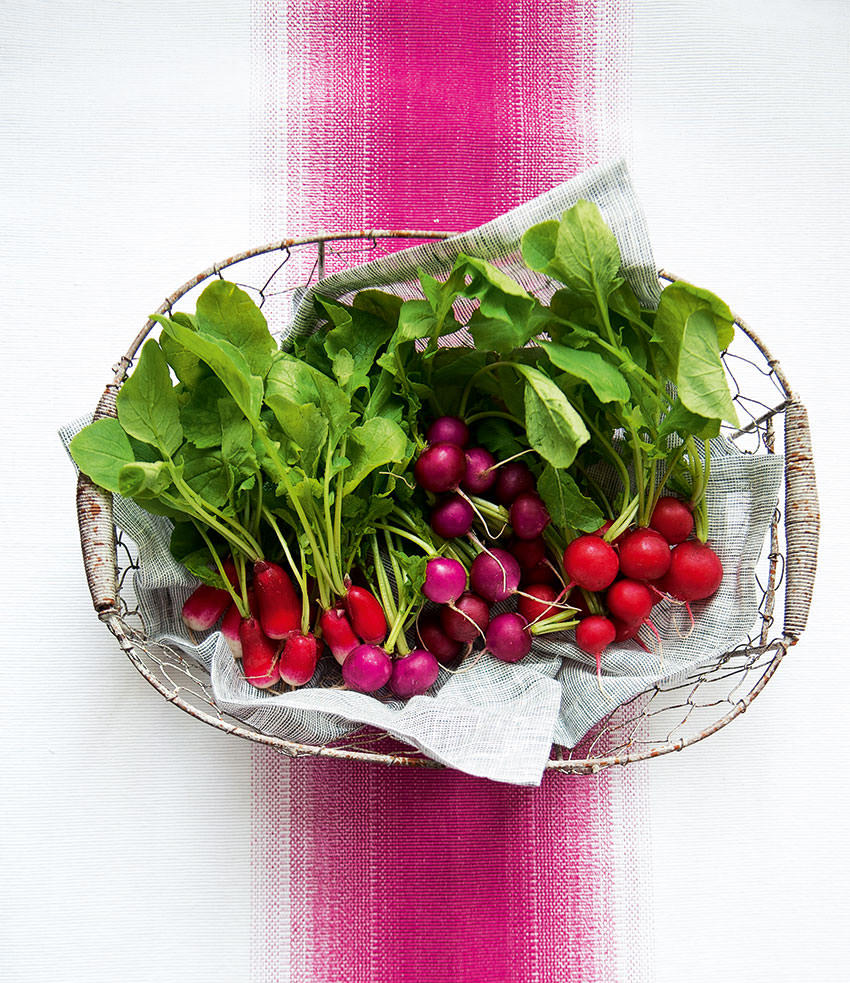
Recipes
Get Premium access to all the latest content online
Subscribe and view full print editions online... Subscribe

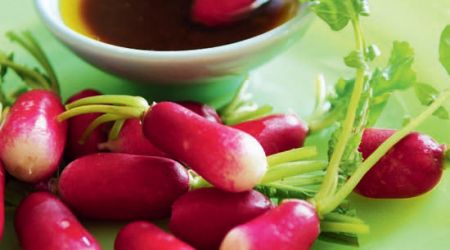
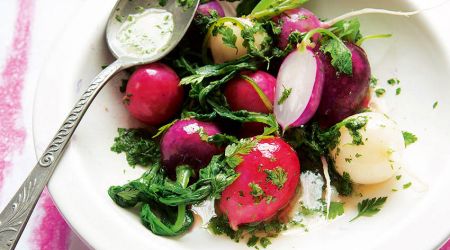
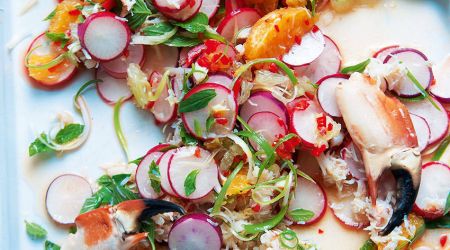
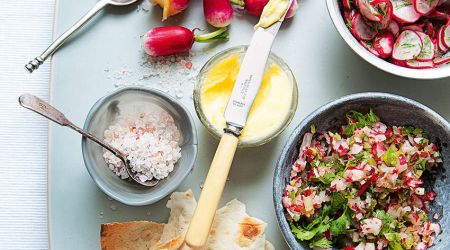
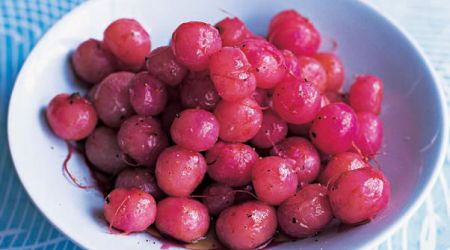
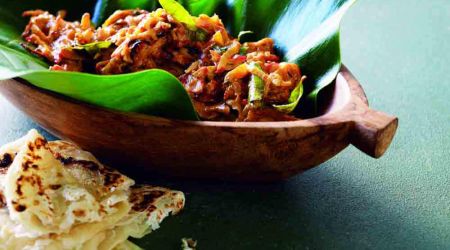
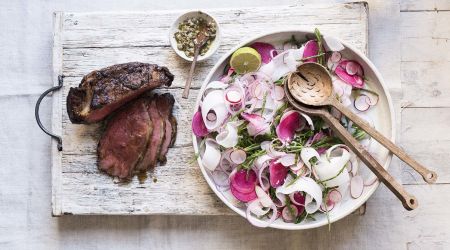
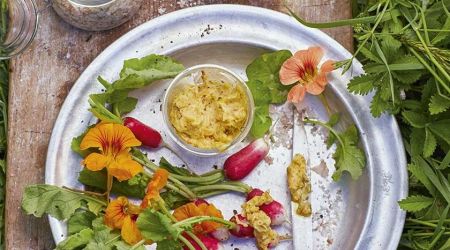

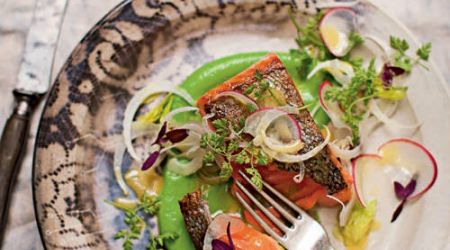
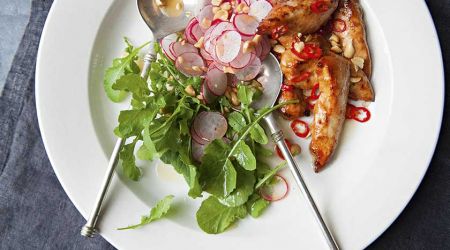
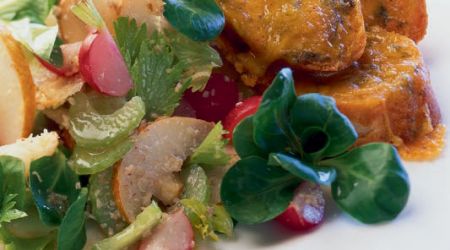
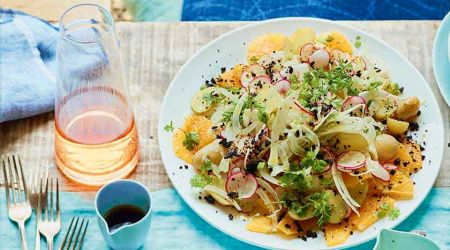
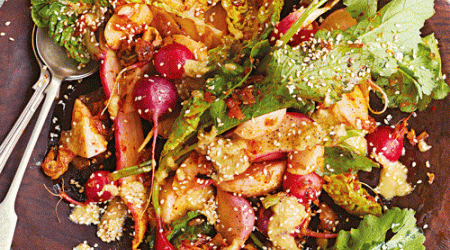
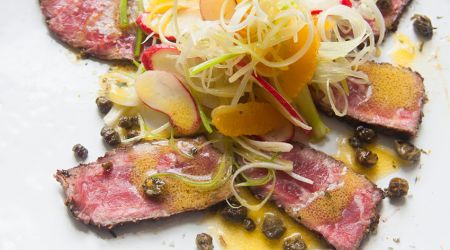
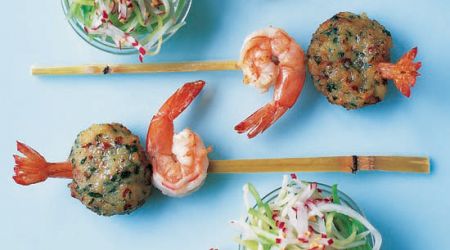

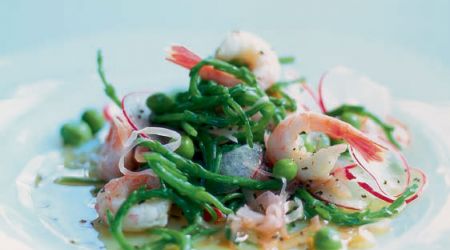
_bc3f3685bee9310b32ee8e27b331ee38.jpg)
